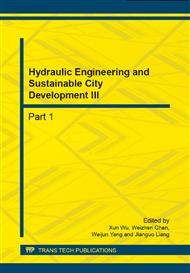[1]
Naveen Eluru, Chandra R. Bhat, David A. Hensher. A mixed generalized ordered response model for examining pedestrian and bicyclist injury severity level in traffic crashes [J] Accident Analysis & Prevention Volume 40, Issue 3, (2008)1033–1054.
DOI: 10.1016/j.aap.2007.11.010
Google Scholar
[2]
Mohammed A. Quddus, Robert B. Noland, Hoong Chor Chin. An analysis of motorcycle injury and vehicle damage severity using ordered probit models [J]. Journal of Safety Research. 33 (2002) 445– 462.
DOI: 10.1016/s0022-4375(02)00051-8
Google Scholar
[3]
Mohamed Abdel-Aty. Analysis of driver injury severity levels at multiple locations using ordered probit models [J]. Journal of Safety Research 34 (2003) 597– 603.
DOI: 10.1016/j.jsr.2003.05.009
Google Scholar
[4]
Dursun Delen, Ramesh Sharda, Max Bessonov. Identifying significant predictors of injury severity in traffic accidents using a series of artificial neural networks [J] Accident Analysis and Prevention 38 (2006) 434–444.
DOI: 10.1016/j.aap.2005.06.024
Google Scholar
[5]
Jianhua Yan. Research on the methods of accident prediction [D]. Shandong: Shandong University of Technology, 2010. 15-25.
Google Scholar
[6]
Jun Tang, Yan Xu, Jinlong Li. The application of the combine of artificial network and Markov network prediction model on asphalt pavement performance [J]. Highway Engineering, 2014, 109(1): 108-111.
Google Scholar
[7]
Mohamed A. Abdel-Aty, Hassan T. Abdelwahab. Predicting Injury Severity Levels in Traffic Crashes: A Modeling Comparison. Transportation Research 59-65.
DOI: 10.1061/(asce)0733-947x(2004)130:2(204)
Google Scholar
[8]
Tianjun Yang, Xiaochun Zhang, Xiaoguang Yang,et al. Research on the evaluation of city road traffic safety based on BP artificial network [J]. Journal of China University of Mining &Technology, 2005 , 34(1): 37-40.
Google Scholar
[9]
Fly Synopsys product research and development centers. Realization of neural network theory and MATLAB7 [M]. Beijing: Electronic Industry Press, 2005, 99-120.
Google Scholar


